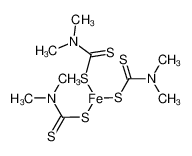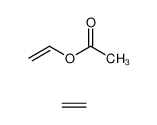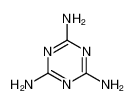| Product name | ferbam |
|---|
| Product number | - |
|---|---|
| Other names | Aaferzimag |
| Identified uses | For industry use only. |
|---|---|
| Uses advised against | no data available |
| Company | MOLBASE (Shanghai) Biotechnology Co., Ltd. |
|---|---|
| Address | Floor 4 & 5, Building 12, No. 1001 North Qinzhou Road, Xuhui District, Shanghai, China |
| Telephone | +86(21)64956998 |
| Fax | +86(21)54365166 |
| Emergency phone number | +86-400-6021-666 |
|---|---|
| Service hours | Monday to Friday, 9am-5pm (Standard time zone: UTC/GMT +8 hours). |
Skin irritation, Category 2
Eye irritation, Category 2
Specific target organ toxicity – single exposure, Category 3
Hazardous to the aquatic environment, short-term (Acute) - Category Acute 1
Hazardous to the aquatic environment, long-term (Chronic) - Category Chronic 1
2.2 GHS label elements, including precautionary statements| Pictogram(s) | 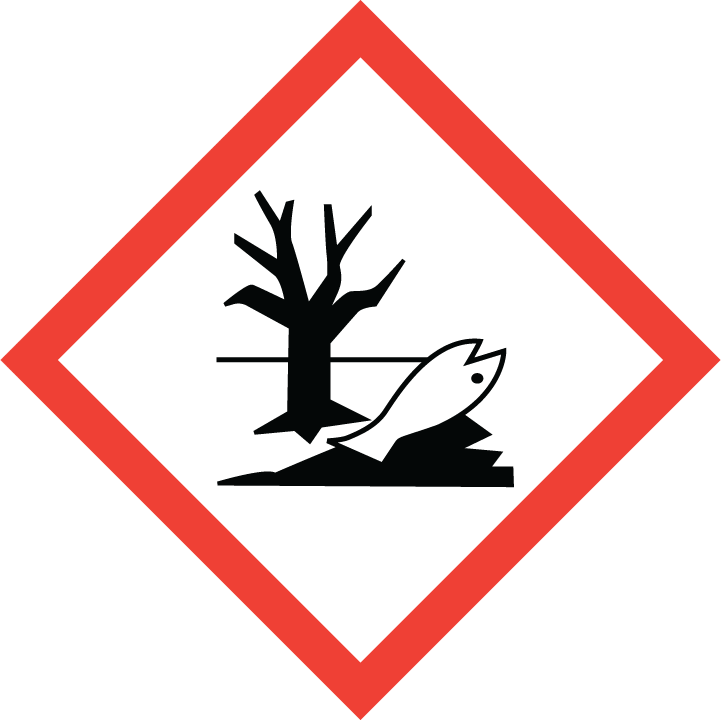 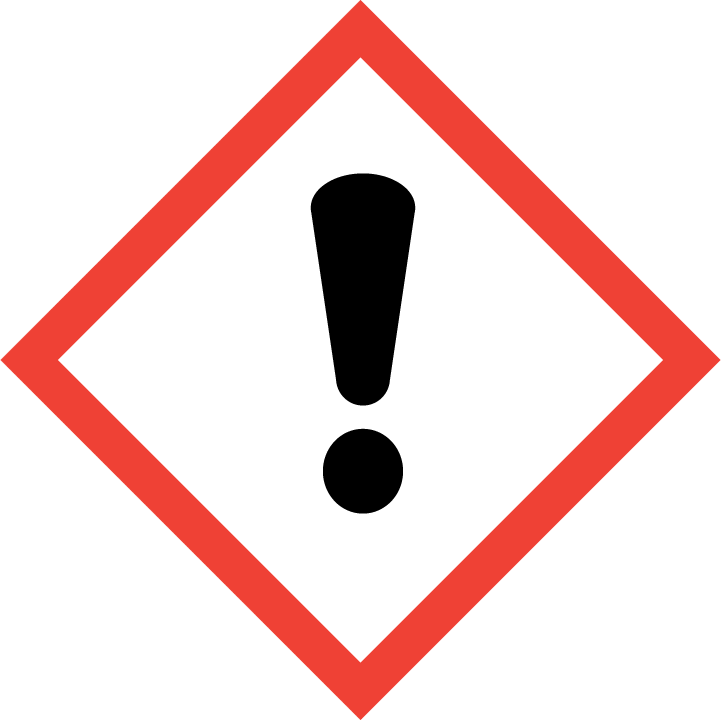 |
|---|---|
| Signal word | Warning |
| Hazard statement(s) | H315 Causes skin irritation H319 Causes serious eye irritation H335 May cause respiratory irritation H410 Very toxic to aquatic life with long lasting effects |
| Precautionary statement(s) | |
| Prevention | P264 Wash ... thoroughly after handling. P280 Wear protective gloves/protective clothing/eye protection/face protection. P261 Avoid breathing dust/fume/gas/mist/vapours/spray. P271 Use only outdoors or in a well-ventilated area. P273 Avoid release to the environment. |
| Response | P302+P352 IF ON SKIN: Wash with plenty of water/... P321 Specific treatment (see ... on this label). P332+P313 If skin irritation occurs: Get medical advice/attention. P362+P364 Take off contaminated clothing and wash it before reuse. P305+P351+P338 IF IN EYES: Rinse cautiously with water for several minutes. Remove contact lenses, if present and easy to do. Continue rinsing. P337+P313 If eye irritation persists: Get medical advice/attention. P304+P340 IF INHALED: Remove person to fresh air and keep comfortable for breathing. P312 Call a POISON CENTER/doctor/…if you feel unwell. P391 Collect spillage. |
| Storage | P403+P233 Store in a well-ventilated place. Keep container tightly closed. P405 Store locked up. |
| Disposal | P501 Dispose of contents/container to ... |
none
3.Composition/information on ingredients 3.1 Substances| Chemical name | Common names and synonyms | CAS number | EC number | Concentration |
|---|---|---|---|---|
| ferbam | ferbam | 14484-64-1 | none | 100% |
Consult a physician. Show this safety data sheet to the doctor in attendance.
If inhaledFresh air, rest. Refer for medical attention.
In case of skin contactRemove contaminated clothes. Rinse and then wash skin with water and soap.
In case of eye contactFirst rinse with plenty of water for several minutes (remove contact lenses if easily possible), then refer for medical attention.
If swallowedInduce vomiting (ONLY IN CONSCIOUS PERSONS!). Refer for medical attention .
4.2 Most important symptoms/effects, acute and delayedExposure Routes: inhalation, ingestion, skin and/or eye contact Symptoms: Irritation eyes, respiratory tract; dermatitis; gastrointestinal disturbance Target Organs: Eyes, skin, respiratory system, gastrointestinal tract (NIOSH, 2016)
4.3 Indication of immediate medical attention and special treatment needed, if necessaryWash contaminating chemical from skin and hair with soap and water. Persons sensitive to thiram (rubber-sensitive) should be permanently removed from contact with compounds of this nature. Flush contaminant from eyes with fresh water for 10-15 minutes. If thiram or metallo dithiocarbamate compounds have been ingested: a) if vigorous emesis has not already occurred and victim is fully alert, give syrup of ipecac, followed by 1-2 glasses of water to induce vomiting (adults, 12 yr and older: 30 mL; children under 12: 15 mL). If consciousness level declines or vomiting has not occurred in 15 minutes, empty the stomach by intubation, aspiration, and lavage. /Dithiocarbamates and Thiocarbamates/
5.Fire-fighting measures 5.1 Extinguishing media Suitable extinguishing media/Use/ water spray, powder.
5.2 Specific hazards arising from the chemicalExcerpt from ERG Guide 171 [Substances (Low to Moderate Hazard)]: Some may burn but none ignite readily. Containers may explode when heated. Some may be transported hot. For UN3508, be aware of possible short circuiting as this product is transported in a charged state. (ERG, 2016)
5.3 Special protective actions for fire-fightersWear self-contained breathing apparatus for firefighting if necessary.
6.Accidental release measures 6.1 Personal precautions, protective equipment and emergency proceduresUse personal protective equipment. Avoid dust formation. Avoid breathing vapours, mist or gas. Ensure adequate ventilation. Evacuate personnel to safe areas. Avoid breathing dust. For personal protection see section 8.
6.2 Environmental precautionsSweep spilled substance into covered sealable containers. If appropriate, moisten first to prevent dusting. Carefully collect remainder. Then store and dispose of according to local regulations. Do NOT let this chemical enter the environment. Personal protection: particulate filter respirator adapted to the airborne concentration of the substance.
6.3 Methods and materials for containment and cleaning upVentilate area of spill. Collect spilled material in the most convenient and safe manner and deposit in sealed containers for reclamation, or for disposal in a secured sanitary landfill. Liquid containing ferbam should be absorbed in vermiculite, dry sand, earth, or a similar material.
7.Handling and storage 7.1 Precautions for safe handlingAvoid contact with skin and eyes. Avoid formation of dust and aerosols. Avoid exposure - obtain special instructions before use.Provide appropriate exhaust ventilation at places where dust is formed. For precautions see section 2.2.
7.2 Conditions for safe storage, including any incompatibilitiesSeparated from strong oxidants, copper compounds, mercury compounds, alkaline materials and food and feedstuffs. Dry. Well closed.Store in cool, dry, well-ventilated, secure area out of reach of children and animals.
8.Exposure controls/personal protection 8.1 Control parameters Occupational Exposure limit valuesRecommended Exposure Limit: 10 Hr Time-Weighted Avg: 10 mg/cu m.
Biological limit valuesno data available
8.2 Appropriate engineering controlsHandle in accordance with good industrial hygiene and safety practice. Wash hands before breaks and at the end of workday.
8.3 Individual protection measures, such as personal protective equipment (PPE) Eye/face protectionSafety glasses with side-shields conforming to EN166. Use equipment for eye protection tested and approved under appropriate government standards such as NIOSH (US) or EN 166(EU).
Skin protectionWear impervious clothing. The type of protective equipment must be selected according to the concentration and amount of the dangerous substance at the specific workplace. Handle with gloves. Gloves must be inspected prior to use. Use proper glove removal technique(without touching glove's outer surface) to avoid skin contact with this product. Dispose of contaminated gloves after use in accordance with applicable laws and good laboratory practices. Wash and dry hands. The selected protective gloves have to satisfy the specifications of EU Directive 89/686/EEC and the standard EN 374 derived from it.
Respiratory protectionWear dust mask when handling large quantities.
Thermal hazardsno data available
9.Physical and chemical properties| Physical state | odourless black solid |
|---|---|
| Colour | Black or dark-colored fluffy powder |
| Odour | Odorless |
| Melting point/ freezing point | 66°C(lit.) |
| Boiling point or initial boiling point and boiling range | 98°C/19mmHg(lit.) |
| Flammability | Combustible SolidCombustible. Gives off irritating or toxic fumes (or gases) in a fire. |
| Lower and upper explosion limit / flammability limit | no data available |
| Flash point | 9°C(lit.) |
| Auto-ignition temperature | no data available |
| Decomposition temperature | 180°C |
| pH | pH = 5.0 |
| Kinematic viscosity | no data available |
| Solubility | 0.01 % (NIOSH, 2016) |
| Partition coefficient n-octanol/water (log value) | log Kow = -1.60 |
| Vapour pressure | 0 mm Hg (approx) (NIOSH, 2016) |
| Density and/or relative density | approx 0.6 kg/L |
| Relative vapour density | no data available |
| Particle characteristics | no data available |
no data available
10.2 Chemical stabilityTends to decompose on prolonged storage or exposure to heat and moisture.
10.3 Possibility of hazardous reactionsIt should be kept away from ignition sources because the decomp products are flammable.FERBAM is a dithiocarbamate. Flammable gases are generated by the combination of thiocarbamates and dithiocarbamates with aldehydes, nitrides, and hydrides. Thiocarbamates and dithiocarbamates are incompatible with acids, peroxides, and acid halides.
10.4 Conditions to avoidno data available
10.5 Incompatible materialsStrong oxidizers, moisture.
10.6 Hazardous decomposition productsWhen heated to decomposition it emits very toxic fumes of /nitrogen and sulfur oxides./
11.Toxicological information Acute toxicity- Oral: LD50 Rat oral 1130 mg/kg
- Inhalation: LC50 Rat inhalation 0.4 mg/L/4 hr
- Dermal: no data available
no data available
Serious eye damage/irritationno data available
Respiratory or skin sensitizationno data available
Germ cell mutagenicityno data available
CarcinogenicityClassification of carcinogenicity: 1) evidence in humans: No adequate data; 2) evidence in animals: Inadequate data. Overall summary evaluation of carcinogenic risk to humans is Group 3: The agent is not classifiable as to its carcinogenicity to humans. /From table/
Reproductive toxicityno data available
STOT-single exposureno data available
STOT-repeated exposureno data available
Aspiration hazardno data available
12.Ecological information 12.1 Toxicity- Toxicity to fish: LC50 Salmo gairdneri (Rainbow trout, early life stages from the fertilized egg to the early fry stage) 2.9 ug/L/60 day (95% confidence interval: 2.7-3.2 ug/L); renewal
- Toxicity to daphnia and other aquatic invertebrates: LC50 Daphnia magna 0.09 mg/L/48 hr /Conditions of bioassay not specified in source examined
- Toxicity to algae: no data available
- Toxicity to microorganisms: no data available
AEROBIC: In pH 3.4 sandy soil, ferbam was largely decomposed after 4 to 5 weeks, while in pH 7.0 soil ferbam was decomposed after 14 to 15 weeks(1). Ferbam took longer than 8 weeks to reach the half-decay point in humus sandy soils as determined by activity to Rhizoctonia solani. If the humus content was 1.2% or below, an initial lag in the start of decomposition was observed(2). Ferbam releases carbon disulfide when it decomposes in soil(3).
12.3 Bioaccumulative potentialAn estimated BCF of 3 was calculated for ferbam(SRC), using a log Kow of -1.60(1) and a regression-derived equation(2). According to a classification scheme(3), this BCF suggests the potential for bioconcentration in aquatic organisms is low(SRC), provided the compound is not altered physically or chemically once released into the environment.
12.4 Mobility in soilThe Koc of ferbam is estimated as 300(SRC), using a water solubility of 130 mg/L(1) and a regression-derived equation(2). According to a classification scheme(3), this estimated Koc value suggests that ferbam is expected to have moderate mobility in soil. Using a soil TLC system (Hagerstown silty clay loam, 2.5% organic matter, 39.5% clay, pH 6.8) visualized by bioautography with 10 soil fungi and one alga, mean Rf values for analytical grade ferbam were 0.93, 0.64, 0.36, and 0.0(4).
12.5 Other adverse effectsno data available
13.Disposal considerations 13.1 Disposal methods ProductThe material can be disposed of by removal to a licensed chemical destruction plant or by controlled incineration with flue gas scrubbing. Do not contaminate water, foodstuffs, feed or seed by storage or disposal. Do not discharge to sewer systems.
Contaminated packagingContainers can be triply rinsed (or equivalent) and offered for recycling or reconditioning. Alternatively, the packaging can be punctured to make it unusable for other purposes and then be disposed of in a sanitary landfill. Controlled incineration with flue gas scrubbing is possible for combustible packaging materials.
14.Transport information 14.1 UN Number| ADR/RID: UN2811 | IMDG: UN2811 | IATA: UN2811 |
| ADR/RID: TOXIC SOLID, ORGANIC, N.O.S. |
| IMDG: TOXIC SOLID, ORGANIC, N.O.S. |
| IATA: TOXIC SOLID, ORGANIC, N.O.S. |
| ADR/RID: 6.1 | IMDG: 6.1 | IATA: 6.1 |
| ADR/RID: II | IMDG: II | IATA: II |
| ADR/RID: yes | IMDG: yes | IATA: yes |
no data available
14.7 Transport in bulk according to Annex II of MARPOL 73/78 and the IBC Codeno data available
15.Regulatory information 15.1 Safety, health and environmental regulations specific for the product in question| Chemical name | Common names and synonyms | CAS number | EC number |
|---|---|---|---|
| ferbam | ferbam | 14484-64-1 | none |
| European Inventory of Existing Commercial Chemical Substances (EINECS) | Listed. | ||
| EC Inventory | Listed. | ||
| United States Toxic Substances Control Act (TSCA) Inventory | Listed. | ||
| China Catalog of Hazardous chemicals 2015 | Not Listed. | ||
| New Zealand Inventory of Chemicals (NZIoC) | Listed. | ||
| Philippines Inventory of Chemicals and Chemical Substances (PICCS) | Not Listed. | ||
| Vietnam National Chemical Inventory | Not Listed. | ||
| Chinese Chemical Inventory of Existing Chemical Substances (China IECSC) | Listed. | ||
| Creation Date | Aug 10, 2017 |
|---|---|
| Revision Date | Aug 10, 2017 |
- CAS: Chemical Abstracts Service
- ADR: European Agreement concerning the International Carriage of Dangerous Goods by Road
- RID: Regulation concerning the International Carriage of Dangerous Goods by Rail
- IMDG: International Maritime Dangerous Goods
- IATA: International Air Transportation Association
- TWA: Time Weighted Average
- STEL: Short term exposure limit
- LC50: Lethal Concentration 50%
- LD50: Lethal Dose 50%
- EC50: Effective Concentration 50%
- IPCS - The International Chemical Safety Cards (ICSC), website: http://www.ilo.org/dyn/icsc/showcard.home
- HSDB - Hazardous Substances Data Bank, website: https://toxnet.nlm.nih.gov/newtoxnet/hsdb.htm
- IARC - International Agency for Research on Cancer, website: http://www.iarc.fr/
- eChemPortal - The Global Portal to Information on Chemical Substances by OECD, website: http://www.echemportal.org/echemportal/index?pageID=0&request_locale=en
- CAMEO Chemicals, website: http://cameochemicals.noaa.gov/search/simple
- ChemIDplus, website: http://chem.sis.nlm.nih.gov/chemidplus/chemidlite.jsp
- ERG - Emergency Response Guidebook by U.S. Department of Transportation, website: http://www.phmsa.dot.gov/hazmat/library/erg
- Germany GESTIS-database on hazard substance, website: http://www.dguv.de/ifa/gestis/gestis-stoffdatenbank/index-2.jsp
- ECHA - European Chemicals Agency, website: https://echa.europa.eu/





